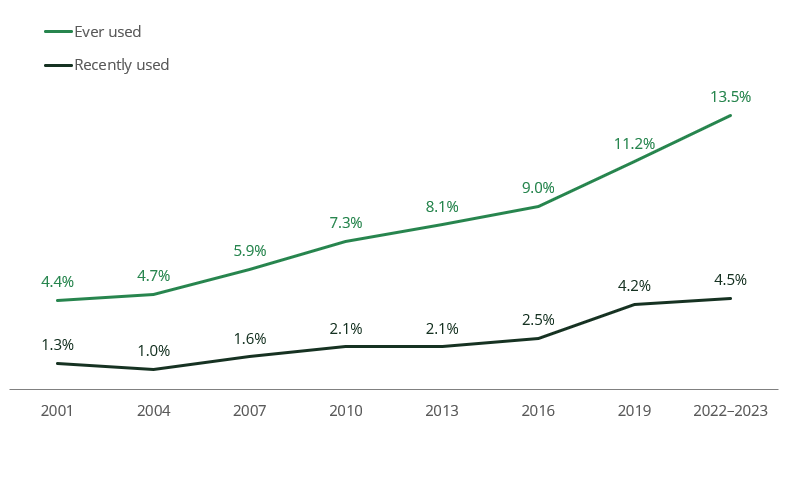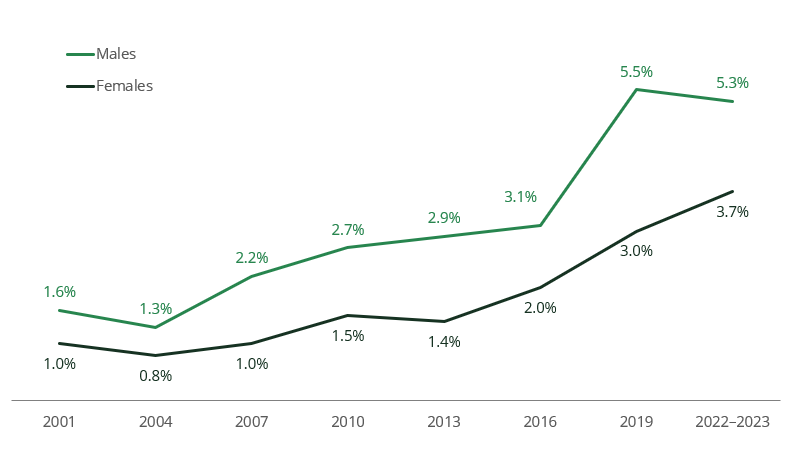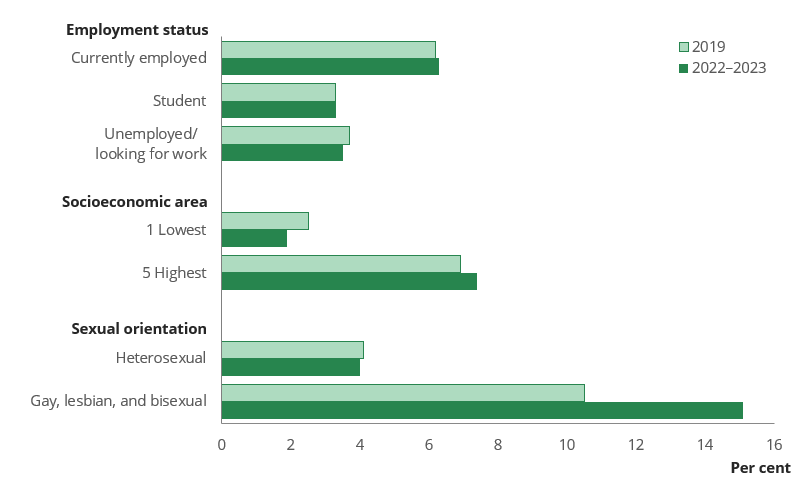Table 1: Summary of cocaine use among people aged 14 and over in 2022– 2023Lifetime use | 13.5% (2.9 million people) |
|---|
Recent use1 | 4.5% (1.0 million people) |
|---|
Change since 2019 | ⬆ Lifetime use (11.2%) ~ Recent use (4.2%) |
|---|
Change since 2001 | ⬆ Lifetime use (4.4%) ⬆ Recent use (1.3%) |
|---|
Opportunity to use in the last 12 months2 | 11.0% |
|---|
Age group most likely to use | 20–29 (11.8%) |
|---|
Average age of first use | 24.0 years (2019: 23.6 years) |
|---|
Table 2: Snapshot of cocaine use among people who had used it in the previous 12 months in 2022–2023Used monthly or more often | 15.4% |
|---|
Main form used | Powder: 99% |
|---|
Diagnosed or treated for a mental health condition | 26% |
|---|
High and Very high psychological distress | 31% (2019: 25%) |
|---|
1. Refers to use of cocaine in the previous 12 months.
2. Proportion of people who had been offered cocaine or otherwise had the opportunity to use cocaine in the previous 12 months.
Source: NDSHS 2022–2023.
Use of cocaine in Australia remains high
In 2022–2023, 4.5% of people in Australia had used cocaine in the previous 12 months, equating to 1.0 million people. This means that cocaine was the second most used illicit drug in 2022–2023, behind only marijuana/cannabis (11.5%) and ahead of the third most used illicit drug, hallucinogens (2.4%).
While this was not a big change from 2019 (4.2%), it continues the upwards trend since 2004 when just 1.0% of the population had recently used cocaine (Figure 1).

Source: NDSHS 2022–2023, Tables 5.63 and 5.65.
People having some experience of using cocaine also increased in 2022–2023. More people had used cocaine at some point in their lifetime than ever before (13.5%), and 1 in 9 people (11.0%) had been offered or had the opportunity to use cocaine in the last 12 months, a substantial increase over 2019 (8.5%) and 2010 (4.4%).
Males have always been more likely to have used cocaine than females, and that remained true in 2022–2023. However, while use of cocaine remained stable among males, the proportion of females who had recently used cocaine increased in 2022–2023, narrowing the gap between males and females that occurred in 2019 (Figure 2).

Source: NDSHS 2022–2023, Table 5.65.
Who is most likely to use cocaine?
As with all illicit drugs, use of cocaine was not uniform across the Australian population in 2022–2023 (Figure 3).

Source: NDSHS 2022–2023, Table 5.67.
People who reported that they were currently employed were the most likely to have used cocaine recently (6.3%), followed by people who were unemployed or looking for work (3.5%) and students (3.3%). This was consistent with results from 2019, but is very different to other illicit drug categories:
- Use of cannabis was higher among people who were unemployed or looking for work (16.0%) than people who were currently employed (13.7%).
- Use of ecstasy was highest among students (3.3%*), followed by people who were currently employed (2.7%).
- Use of methamphetamine and amphetamine was highest among people who were unemployed or looking for work (2.7%*).
* Estimate has a relative standard between 25% and 50% and should be interpreted with caution.
Use of cocaine was also different in different socioeconomic areas. While people living in areas of most socioeconomic advantage were generally more likely to have used illicit drugs in the previous 12 months than people in the areas of most socioeconomic disadvantage (1.2 times as likely to have done so), they were 3.9 times as likely to have used cocaine in the previous 12 months.
Use of cocaine among gay, lesbian and bisexual people showed a very large increase, from 10.5% of people in 2019 to 15.1% in 2022–2023. Overall, gay, lesbian and bisexual people were 2.7 times as likely as heterosexual people to have used cocaine in the previous 12 months (after adjusting for differences in age), reflecting similar trends for some other illicit drugs.


